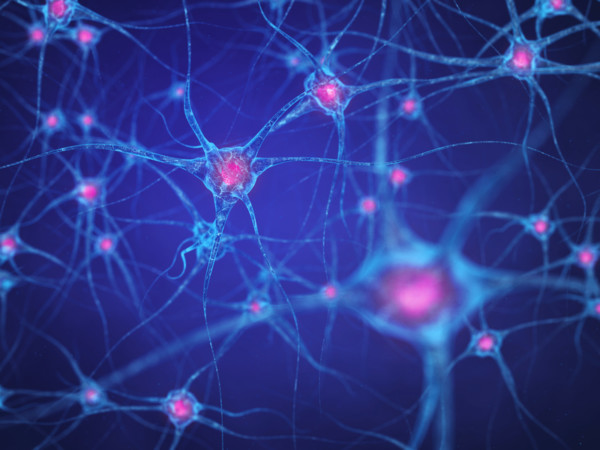
Glycine is important for the central nervous system. Buy the bestselling glycine supplements from Amazon.com
Contents
What is glycine?
Out of the 22 amino acids vital for our body to function and manufacture proteins, glycine is the smallest and simplest, with only a single hydrogen forming its side chain. It is abbreviated at G or Gly and it is the second most widespread amino acid found in human enzymes and proteins.
The liver forms glycine from serine and threonine, which are also amino acids. As a solid, it is a sweet tasting crystalline substance and the principle amino acid within cane sugar. In the human body, the highest concentrations of this amino acid are present in the skin, connective tissues and muscle.
Uses of glycine
This amino acid has several important roles within the body. It is essential for the production of many different acids including nucleic acids, bile acids, creatine phosphate and porphyrins. On a broader scale, the body uses it for regulating and supporting many essential processes.
This substance also has an important role in the central nervous system and the digestive system. It helps with the breakdown of fat by regulating the concentration of bile acids.
Additionally, the body uses this amino acid is for the biosynthesis of heme. Heme is a key component of haemoglobin. Haemoglobin is essential in the maintenance of red blood cell integrity and optimal oxygen carrying capacity.
Medical uses
Mental health
Within the central nervous system, glycine works together with taurine and gamma-amino butyric acid (GABA) as an inhibitory neurotransmitter.
It functions principally within the brain stem and spinal cord where it facilitates the transmission of nerve impulses. This amino acid interferes with the hyper-excitability of the central nervous system neurons. It does this by removing chloride and potassium to regulate their ability to be over stimulated.
There have been numerous studies investigating the benefits of this amino acid in the treatment of disorders such as hyperactivity, schizophrenia, bipolar, and epilepsy. One study focusing on treatment-resistant schizophrenic patients found that high-dose glycine in association with antipsychotic medication could significantly alleviate negative symptoms 1. These results are supported by similar studies investigating psychological disorders2 3. Other studies have shown that glycine treatments can help to prevent seizures associated with epilepsy 4 5.
Blood sugar regulation
This amino acid helps to regulate blood sugar by converting glucose into energy. Therefore scientists have found evidence to support its use to improve the long-term blood sugar levels of patients with type 2 diabetes 6 7. As this amino acid is sweet, it is often recommended as a sugar supplement for diabetics.
Muscle growth
The body uses this amino acid for the biosynthesis of creatine. Creatine provides muscles with a direct energy source and helps to build muscle tissue and strength. Therefore glycine is an important amino acid for athletes wanting to increase muscle mass and performance.
It is also helpful for patients recovering from surgery or other causes of immobility. This is because it can help prevent muscle wasting.
Tissue repair
Glycine is an important anti-aging amino acid. Approximately one third of collagen is comprised of glycine. Collagen is the essential protein which the body uses to keep connective tissues and skin flexible and firm. In the absence of glycine, the body cannot repair damaged tissues.
Additionally research has shown that this amino acid helps to protect the body against shock as a result of blood loss. It also helps to prevent free radical formation and hypoxia8.
Hormone Regulation
This amino acid can be methylated into dimethylglycine (DMG). DMG plays an important role in the one-carbon pathway which is essential for the biosynthesis of steroids such as estrogenic and androgenic hormones. This amino acid also helps to stimulate the secretion of human growth hormone.
Cancer Treatments
Preliminary studies have shown that this amino acid may have a role to play in the treatment of certain cancers. This includes preventing the formation of cancerous melanoma. Results from a study on mice found that dietary glycine inhibited angiogenesis, stopping the growth of tumours 9.
Glycine deficiency
This is uncommon. However, this type of deficiency can occur in individuals that are malnourished or have diseases such as cancer and AIDS. Individuals that have digestive disorders or suffer from fatigue or low energy levels may also have inadequate concentrations of this amino acid.
Dietary sources
Although the body can manufacture glycine, this amino acid can also be sourced from many high-protein foods. In particular, fish, meat and dairy are rich sources of glycine.
Vegetarian sources include soybeans, spinach, kale, cauliflower, cabbage, pumpkin, banana, kiwi fruit, cucumber and beans.
You can also find glycine supplements in the form of powders or capsules. These can be helpful in medical conditions such as prostate problems, poor memory, stroke and schizophrenia. Other supplements containing glycine are available to help treat chronic fatigue syndrome, anaemia and hypoglycaemia. These supplements can help to boost energy levels and general well-being.
Wider uses of glycine
You may come across this amino acid in food and beverage products as a taste enhancer and sweetener. It is also used as an additive in animal feed, a buffering agent in cosmetics, antacids, irrigation solutions and in agricultural fertilizers. Many commercial applications use a synthetic version of this amino acid produced by using ammonia to treat chloroacetic acid.
Conclusion
It is also important in the production of human growth hormones and creatine. As a result, this amino acid has become valuable for athletes wanting to build muscle mass and strength.
It also has positive applications for individuals suffering from neurobehavioral disorders, diabetes, chronic fatigue and certain cancers. As more research and clinical trials are conducted, it is likely that this amino acid will continue to play an important role in the treatment of a range of medical conditions. Maintaining a healthy balanced diet will help to support the body and supplement internal glycine biosynthesis.
References
- Heresco-Levy U, Javitt DC, Ermilov M, Mordel C, Silipo G, Lichtenstein M. Efficacy of high-dose glycine in the treatment of enduring negative symptoms of schizophrenia. Archives of General Psychiatry. Internet. 1999. 56(1):29-36. Available from: https://www.ncbi.nlm.nih.gov/pubmed/9892253 ↩
- Javitt DC, Sershen H, Hashim A, Lajtha A. Reversal of phencyclidine-induced hyperactivity by glycine and the glycine uptake inhibitor glycyldodecylamide. Neuropsychopharmacology. Internet. 1997. 17(3):202-4. Available from: https://www.ncbi.nlm.nih.gov/pubmed/9272487 ↩
- Heresco-Levy U, Javitt DC, Ermilov M, Mordel C, Horowitz A, Kelly D. Double-blind, placebo-controlled, crossover trial of glycine adjuvant therapy for treatment-resistant schizophrenia. British Journal of Psychiatry. Internet. 1996. 169(5):610-7. Available from: https://www.ncbi.nlm.nih.gov/pubmed/8932891 ↩
- Garriga-Canut M, Schoenike B, Qazi R, Bergendahl K, Daley TJ, Pfender RM, Morrison JF, Ockuly J, Stafstrom C, Sutula T, Roopra A. 2-Deoxy-D-glucose reduces epilepsy progression by NRSF-CtBP-dependent metabolic regulation of chromatin structure. Nature Neuroscience. Internet. 2006. 9(11):1382-7. Available from: https://www.ncbi.nlm.nih.gov/pubmed/17041593 ↩
- De Konig TJ, Duran M, Dorland L, Gooskens R, Van Shaftingen E, Jaeken J, Blau N, Berger R, Poll-The BT. Beneficial effects of L-serine and glycine in the management of seizures in 3-phosphoglycerate dehydrogenase deficiency. Annals of Neurology. Internet. 1998. 44(2):261-5. Available from: https://www.ncbi.nlm.nih.gov/pubmed/9708551 ↩
- Kim W, Egan JM. The Role of Incretins in Glucose Homeostasis and Diabetes Treatment. Pharmacological Reviews. Internet. 2008. 60(4)470-512. Available from: https://www.ncbi.nlm.nih.gov/pmc/articles/PMC2696340/ ↩
- Sekhar RV, McKay SV, Patel SG, Guthikonda AP, Reddy VT, Balasubramanyam A, Jahoor F. Glutathione synthesis is diminished in patients with uncontrolled diabetes and restored by dietary supplementation with cysteine and glycine. Diabetes Care. Internet. 2011. 34(1):162-7. Available from: http://care.diabetesjournals.org/content/34/1/162.full ↩
- Matilla B, Mauriz JL, Culebras JM, Gonzalez- Gallego J, Gonzalez P. Glycine: a cell protecting anti-oxidant nutrient. Nutr Hosp. Internet. 2002. 17(1):2-9. Available from: https://www.ncbi.nlm.nih.gov/pubmed/11939124 ↩
- Rose ML, Madren J, Bunzendahl H, Thurman RG. Dietary glycine inhibits the growth of B16 melanoma tumors in mice. Carcinogenesis. Internet. 1999. 20(5):793-8. Available from: https://www.ncbi.nlm.nih.gov/pubmed/10334195 ↩



